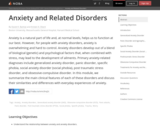
Text and links to all ancillary materials for Module 39
- Subject:
- Psychology
- Social and Behavioral Sciences
- Material Type:
- Module
- Reading
- Teaching/Learning Strategy
- Author:
- David H
- Kristen K
- Date Added:
- 05/31/2021

Text and links to all ancillary materials for Module 39
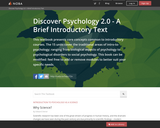
This textbook presents core concepts common to introductory courses. The 15 units cover the traditional areas of intro-to-psychology; ranging from biological aspects of psychology to psychological disorders to social psychology. This book can be modified: feel free to add or remove modules to better suit your specific needs.
This book includes a comprehensive instructor's manual, PowerPoint presentations, a test bank, reading anticipation guides, and adaptive student quizzes.

The NOBA Project is a growing collection of expert-authored, open-licensed modules in psychology, funded by the Diener Education Fund. From these open modules, Tori Kearns and Deborah Lee created an arranged open textbook for her introductory psychology class. This textbook was created under a Round One ALG Textbook Transformation Grant.
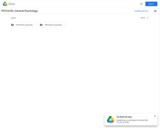
Emphasis will be placed upon application of psychological knowledge to daily situations, and upon accessing and assessing information from a variety of sources about behavior. Skills in scientific reasoning and critical thinking will be developed during this course. Areas of psychology to be included are: research methods, neuroscience, human development, perception, consciousness, learning, memory, intelligence, motivation, emotion, personality, psychological disorders, psychotherapy, stress and health, and social psychology.Login: guest_oclPassword: ocl
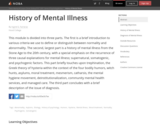
Text and links to all ancillary materials for Module 38
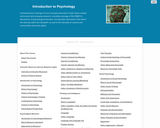
Comprehensive coverage of core concepts grounded in both classic studies and current and emerging research, including coverage of the DSM-5 in discussions of psychological disorders. Incorporates discussions that reflect the diversity within the discipline, as well as the diversity of cultures and communities across the globe.
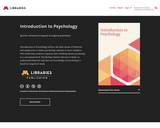
When you teach Introduction to Psychology, do you find it difficult — much harder than teaching classes in statistics or research methods? Do you easily give a lecture on the sympathetic nervous system, a lecture on Piaget, and a lecture on social cognition, but struggle with linking these topics together for the student? Do you feel like you are presenting a laundry list of research findings rather than an integrated set of principles and knowledge? Have you wondered how to ensure your course is relevant to your students? Introduction to Psychology utilizes the dual theme of behavior and empiricism to make psychology relevant to intro students. The author wrote this book to help students organize their thinking about psychology at a conceptual level. Five or ten years from now, he does not expect his students to remember the details of most of what he teaches them. However, he does hope that they will remember that psychology matters because it helps us understand behavior and that our knowledge of psychology is based on empirical study.
This is a derivative of INTRODUCTION TO PSYCHOLOGY by a publisher who has requested that they and the original author not receive attribution, which was originally released and is used under CC BY-NC-SA. This work, unless otherwise expressly stated, is licensed under a Creative Commons Attribution-NonCommercial-ShareAlike 4.0 International License.

This textbook represents the entire catalog of Noba topics. It contains 90 learning modules covering every area of psychology commonly taught in introductory courses. This book can be modified: feel free to rearrange or remove modules to better suit your specific needs.Please note that the publisher requires you to login to access and download the textbooks.
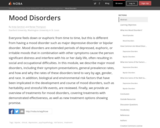
Text and links to all ancillary materials for Module 41

Text and links to all ancillary materials for Module 43
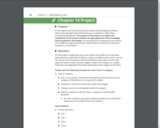
Purpose
In this chapter, you have learned about a variety of psychological disorders. Many of the disorders share similar features or symptoms, while others are significantly different. The purpose of this project is to explore the complexities of the human condition through application of the knowledge you have gained in this chapter. You are going to be creating your own version of the DSM-5 to organize the various mental health conditions you have been exposed to in this chapter.

Psychology is designed to meet scope and sequence requirements for the single-semester introduction to psychology course. The book offers a comprehensive treatment of core concepts, grounded in both classic studies and current and emerging research. The text also includes coverage of the DSM-5 in examinations of psychological disorders. Psychology incorporates discussions that reflect the diversity within the discipline, as well as the diversity of cultures and communities across the globe.Senior Contributing AuthorsRose M. Spielman, Formerly of Quinnipiac UniversityContributing AuthorsKathryn Dumper, Bainbridge State CollegeWilliam Jenkins, Mercer UniversityArlene Lacombe, Saint Joseph's UniversityMarilyn Lovett, Livingstone CollegeMarion Perlmutter, University of Michigan



Text and links to all ancillary materials for Module 45

Text and links to all ancillary materials for Module 42
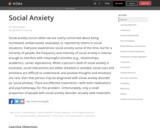
Text and links to all ancillary materials for Module 40

Text and links to all ancillary materials for Module 44
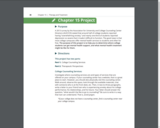
Purpose
A 2013 survey by the Association for University and College Counseling Center Directors (AUCCCD) stated that around half of college students reported having “overwhelming anxiety,” and nearly one-third of students reported depression so severe that it made it difficult to function. The good news is that most college campuses offer mental health services to students and often for free. The purpose of this project is to help you to determine where college students can get mental health support, and what mental health treatment might be like for them.

An introduction to how to determine whether behavior should be diagnosed as a disorder or not. Duration: 2:01.